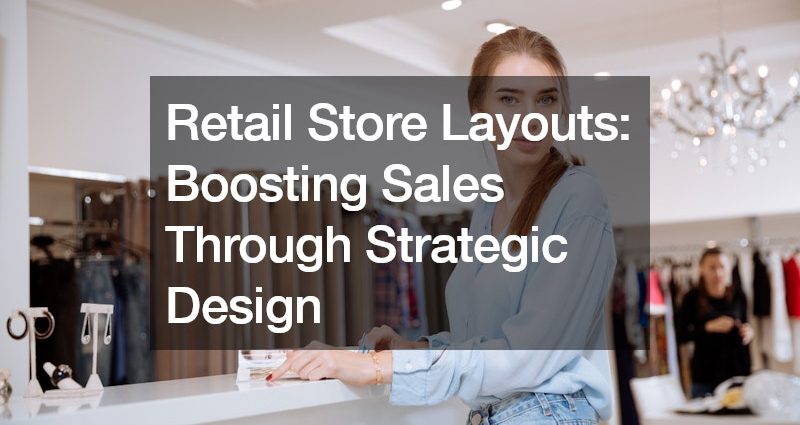
In the bustling world of retail, where competition is fierce and consumer preferences constantly evolve, the layout of your store plays a pivotal role in shaping the customer experience and ultimately driving sales. From the moment shoppers step through the door, every aspect of your store’s design influences their behavior and purchasing decisions. Understanding the psychology behind effective store layouts is essential for retailers seeking to maximize revenue per square foot and foster long-term profitability.
Choosing the Right Floor Plan
The foundation of a successful retail store layout begins with selecting the appropriate floor plan. This decision is not arbitrary but should be carefully aligned with your target market, the nature of your products, and the unique characteristics of your store location.
A well-designed floor plan strikes a delicate balance between optimizing the customer experience and maximizing revenue. It’s not merely about cramming as much merchandise as possible into the available space but rather creating an inviting atmosphere that encourages exploration and facilitates ease of navigation.
Consideration must also be given to the flow of foot traffic within the store. By understanding typical customer behavior, such as the tendency to turn right upon entering, retailers can strategically position high-margin items or promotional displays to capture immediate attention. Moreover, maintaining spacious aisles and avoiding overcrowding ensures that shoppers can move freely throughout the store, enhancing their overall satisfaction and likelihood of making a purchase. In addition, integrating insights from commercial construction professionals ensures that the floor plan accounts for structural integrity, load-bearing capacities, and compliance with building codes, laying a solid foundation for a safe and aesthetically pleasing retail space.
Enhancing Customer Flow
Observing and analyzing customer flow patterns is essential for refining your store layout and optimizing the shopping experience. Through techniques like video recording and heat mapping analysis, retailers can gain valuable insights into how shoppers navigate the store, identify areas of congestion, and pinpoint opportunities for improvement. By strategically placing key attractions, such as promotional displays or popular product categories, along the natural path of customer flow, retailers can effectively guide and influence purchasing decisions.
Creating a decompression zone near the entrance is a proven strategy for easing shoppers into the retail environment and setting the tone for a positive experience. This initial space allows customers to acclimate to their surroundings, absorb the store’s ambiance, and mentally prepare for their shopping journey. Additionally, leveraging insights into customer behavior, such as the inclination to gravitate towards the right side of the store, enables retailers to strategically position merchandise and capitalize on prime real estate for driving sales.
Optimizing Checkout Areas
The checkout area serves as the final touchpoint in the customer’s journey and represents a critical opportunity to capitalize on impulse purchases. By strategically placing low-cost, high-margin items near the register, retailers can tempt shoppers to add a last-minute item to their purchase, thereby increasing overall transaction value. Furthermore, thoughtful consideration should be given to the layout and design of the checkout counter itself, ensuring that it facilitates a seamless and efficient transaction process while minimizing distractions for customers.
Whether positioned at the front left of the store for maximum visibility or strategically placed at the back to free up space for product displays, the checkout area should be carefully integrated into the overall store layout to optimize flow and enhance the overall shopping experience. For larger retailers with ample staff resources, back-of-store checkout counters may offer logistical advantages, while smaller establishments may benefit from front-of-store placement to ensure adequate supervision and security.
Refreshing Product Displays
In a dynamic retail environment, where consumer preferences and market trends are constantly evolving, keeping product displays fresh and engaging is essential for capturing and maintaining customer interest. Regularly refreshing displays not only provides returning customers with a sense of novelty and excitement but also showcases new arrivals and seasonal offerings. Retailers can experiment with various strategies, such as rotating merchandise, updating signage, or highlighting featured products, to create a sense of urgency and encourage impulse purchases.
By strategically integrating vertical shelving placement into the store layout, retailers can maximize visibility for top-selling items while optimizing space utilization. Placing high-demand products at eye level ensures they command attention and are easily accessible to customers, thus driving sales and maximizing revenue potential. Additionally, leveraging aisle endcaps as prime real estate for showcasing promotional or seasonal items allows retailers to capture the attention of shoppers as they navigate the store, further stimulating purchase intent.
Cross-Merchandising Items
Grouping complementary products together and cross-merchandising them on the same display offers retailers a powerful opportunity to increase basket size and drive incremental sales. By strategically pairing items that naturally complement each other, such as shirts and pants or shoes and socks, retailers can encourage customers to make additional purchases while enhancing their overall shopping experience. This strategic approach not only simplifies the shopping process for customers but also creates opportunities for upselling and cross-selling, ultimately boosting sales and improving overall profitability.
In Summary
The layout of your retail store plays a critical role in shaping the customer experience and influencing purchasing decisions. By strategically designing your store layout to align with customer behavior and preferences, optimizing key areas such as checkout counters and product displays, and leveraging cross-merchandising techniques, you can create a shopping environment that maximizes sales and fosters long-term customer loyalty. With careful planning and attention to detail, retailers can transform their store layout into a powerful tool for driving revenue growth and achieving sustainable success in today’s competitive retail landscape.
.

